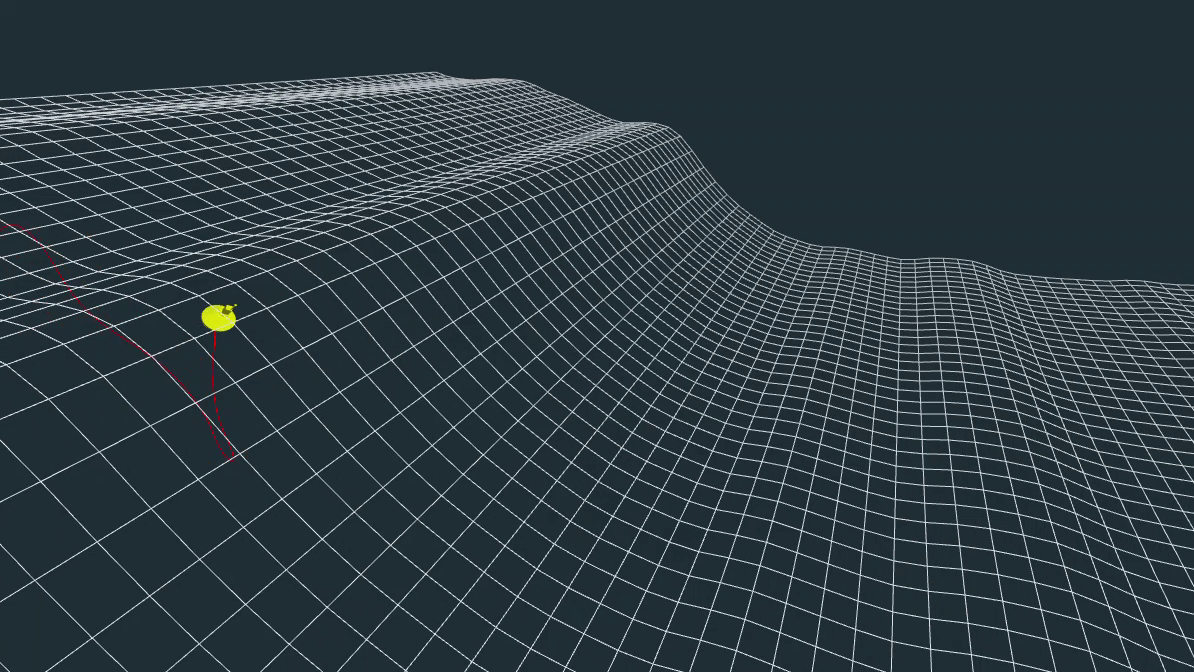4-story rogue wave that randomly appeared in the Pacific Ocean is the 'most extreme' ever detected
Scientists describe it as a "once in a millennium" occurrence.

A four-story-tall rogue wave that briefly reared up in the Pacific Ocean off the coast of Canada in 2020 was the "most extreme" version of the freaky phenomenon ever recorded, scientists now say.
Rogue waves, also known as freak or killer waves, are massive waves that appear in the open ocean seemingly from nowhere.
The rogue wave was detected on Nov. 17, 2020, around 4.3 miles (7 kilometers) off the coast of Ucluelet on Vancouver Island in British Columbia, by an oceanic buoy belonging to Canadian-based research company MarineLabs. Now, in a new study published online Feb. 2 in the journal Scientific Reports, scientists have revealed that the Ucluelet wave was around 58 feet (17.6 meters) tall, making it around three times higher than surrounding waves. Rogue waves this much larger than surrounding swells are a "once in a millennium" occurrence, the researchers said in a statement.
Related: Waves of destruction: History's biggest tsunamis
"Proportionally, the Ucluelet wave is likely the most extreme rogue wave ever recorded," lead author Johannes Gemmrich, an oceanographer at the University of Victoria in British Columbia, said in the statement.
Rogue waves are enormous "walls of water" that form and dissipate in the open ocean, according to the National Oceanic and Atmospheric Association (NOAA). They are different from tsunamis, which are caused by displaced water from underwater earthquakes, landslides or volcanic eruptions and do not become massive until they near the coast.
A rogue wave is scientifically defined as being at least twice as high as the surrounding sea state — the average height of the waves for a given area at a given time. Researchers think that rogue waves are formed when smaller waves merge into larger ones, either due to high surface winds or changes in ocean currents caused by storms, according to NOAA. However, the exact mechanisms behind the freakish crests are still something of a mystery, according to the statement.
Sign up for the Live Science daily newsletter now
Get the world’s most fascinating discoveries delivered straight to your inbox.
The Ucluelet wave formed in a sea state of around 19.5 feet (6 meters), making it just under three times as large as neighboring swells, which is the most extreme size difference ever observed. "Only a few rogue waves in high sea states have been observed directly, and nothing of this magnitude. The probability of such an event occurring is once in 1,300 years," Gemmrich said.
The first official rogue wave was detected in Norway in 1995 and is known as the Draupner wave. Scientists had previously suspected that rogue waves existed; and stories of sailors being caught out or even killed by freakishly massive waves have long filled maritime folklore, but until that 1995 report, scientists had never observed them. Since then, scientists have studied only a handful of rogue waves, but they estimate that one forms every two days somewhere in the world's oceans, researchers wrote in the paper.
The Ucluelet wave is not the largest rogue wave that has ever been discovered. The Draupner wave, for example, measured a much more considerable 84 feet (25.6 m) high. However, the sea state during the Draupner wave was around 39 feet (12 m), making the rogue wave just over twice as tall (not three times) as surrounding crests.
Rogue waves like the Ucuelet wave normally go completely unnoticed. However, if a ship or oil rig were to be caught in one of these freakishly large crests, the result could be disastrous. "The unpredictability of rogue waves, and the sheer power of these 'walls of water' can make them incredibly dangerous to marine operations and the public," Scott Beatty, the CEO of MarineLabs, said in the statement.
But researchers hope that networks of monitoring buoys, such as the 26 MarineLabs buoys strategically positioned along North American coastlines, could reveal more about these oceanic anomalies. "The potential of predicting rogue waves remains an open question, but our data is helping to better understand when, where and how rogue waves form, and the risks that they pose," Beatty said in the statement.
Climate change could affect the intensity and frequency of rogue waves, according to past research. A study published in the journal Science Advances in June 2020 revealed that extreme wave conditions have already increased by between 5% and 15% due to stronger winds and currents caused by rising ocean temperatures.
Originally published on Live Science.

Harry is a U.K.-based senior staff writer at Live Science. He studied marine biology at the University of Exeter before training to become a journalist. He covers a wide range of topics including space exploration, planetary science, space weather, climate change, animal behavior and paleontology. His recent work on the solar maximum won "best space submission" at the 2024 Aerospace Media Awards and was shortlisted in the "top scoop" category at the NCTJ Awards for Excellence in 2023. He also writes Live Science's weekly Earth from space series.









